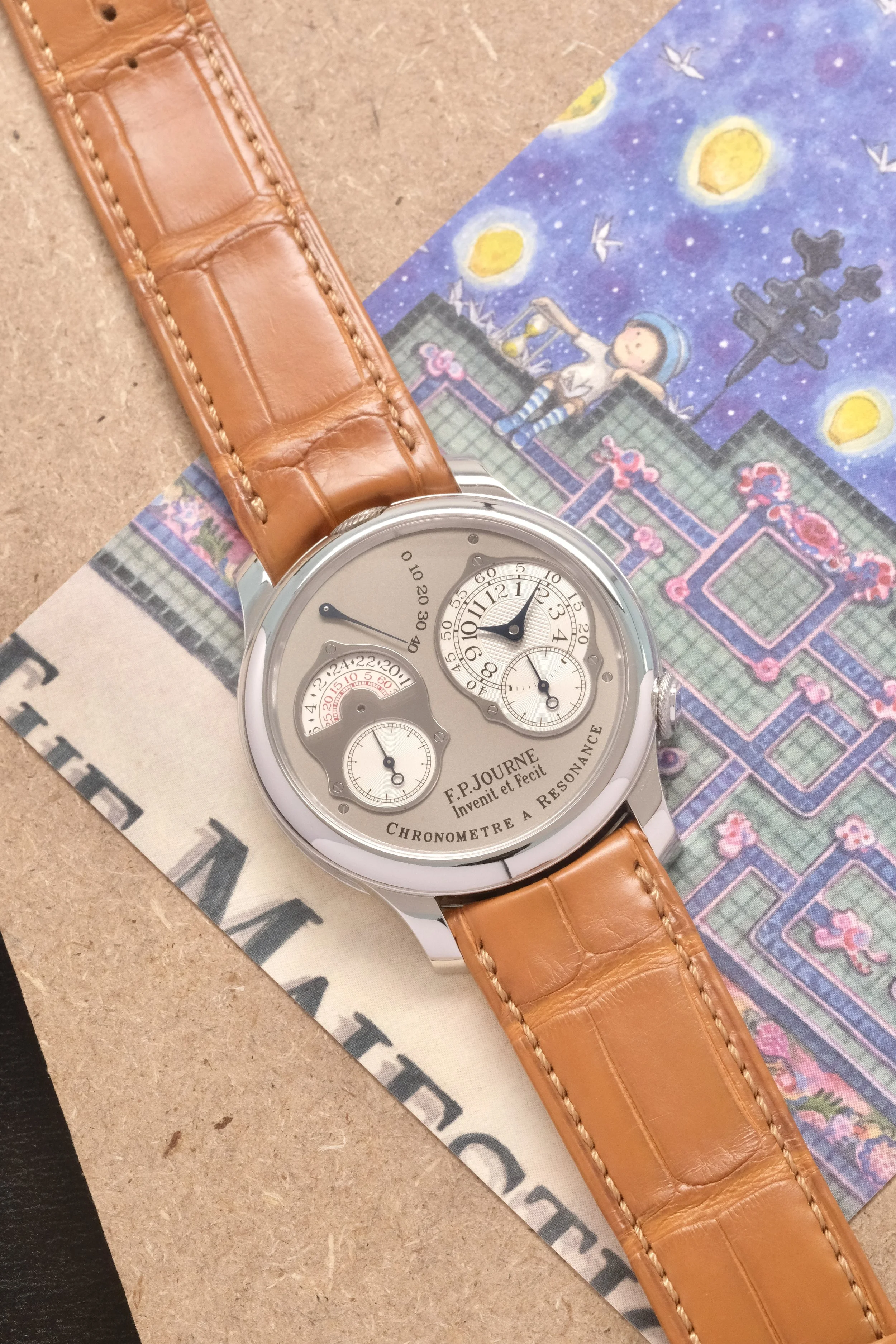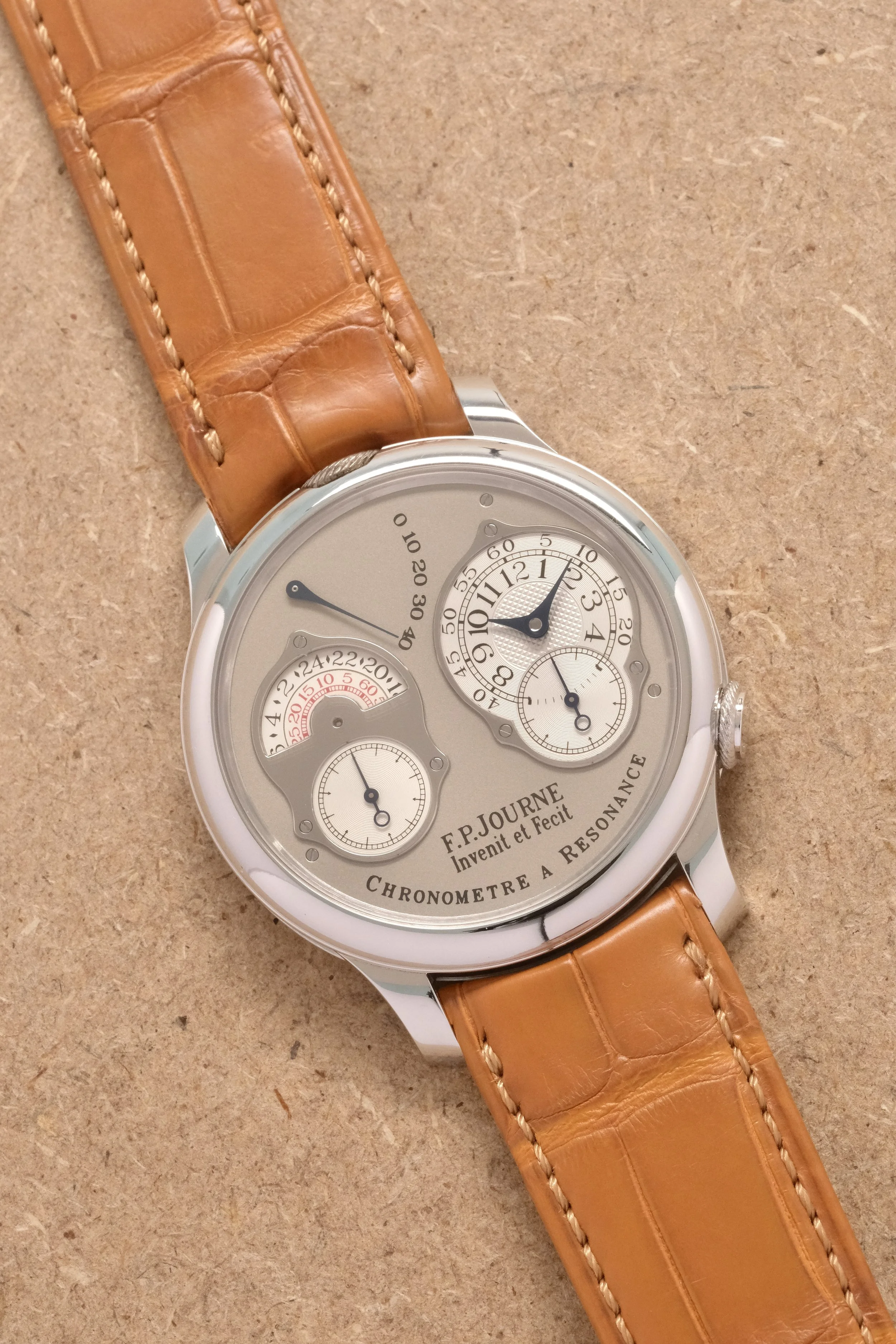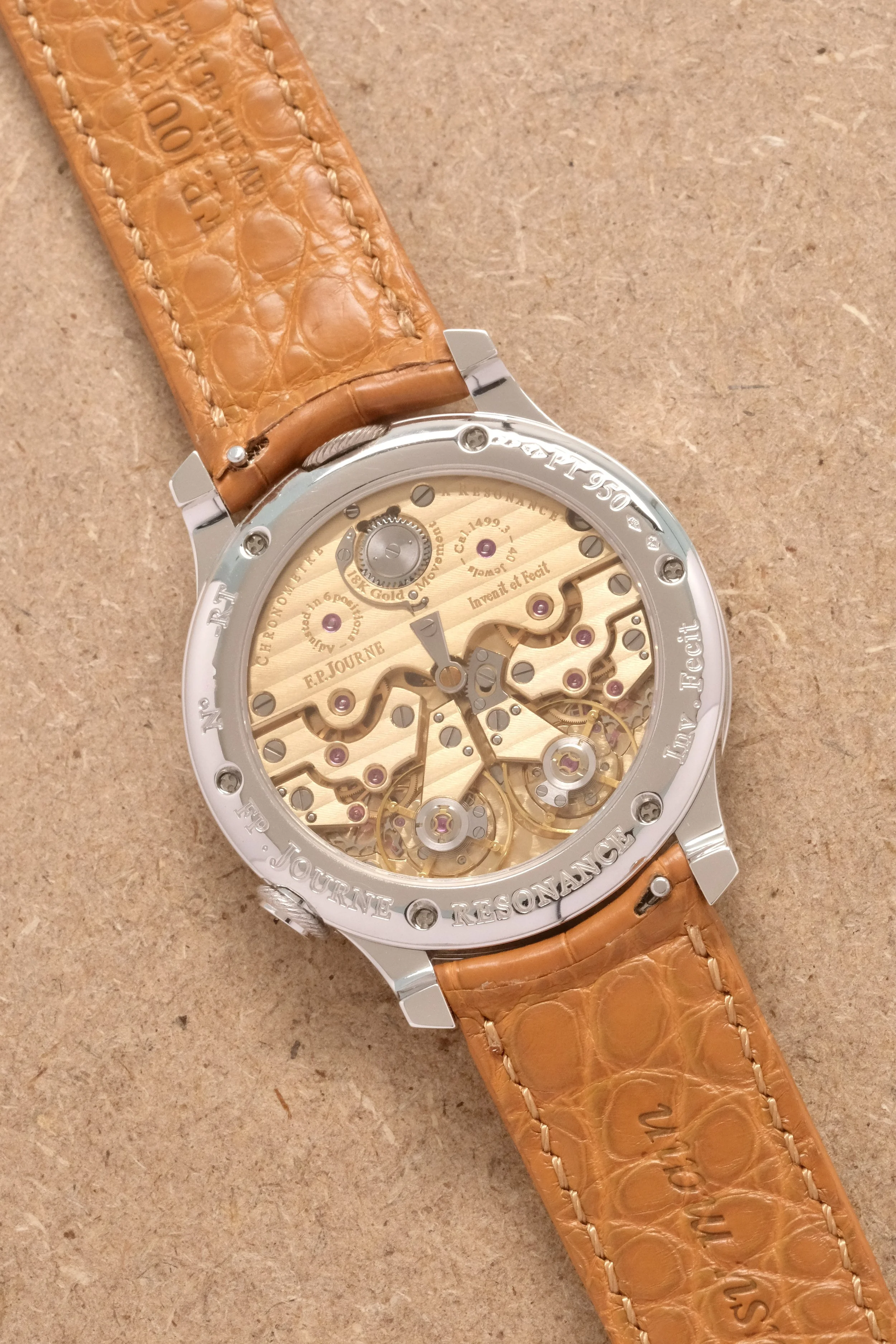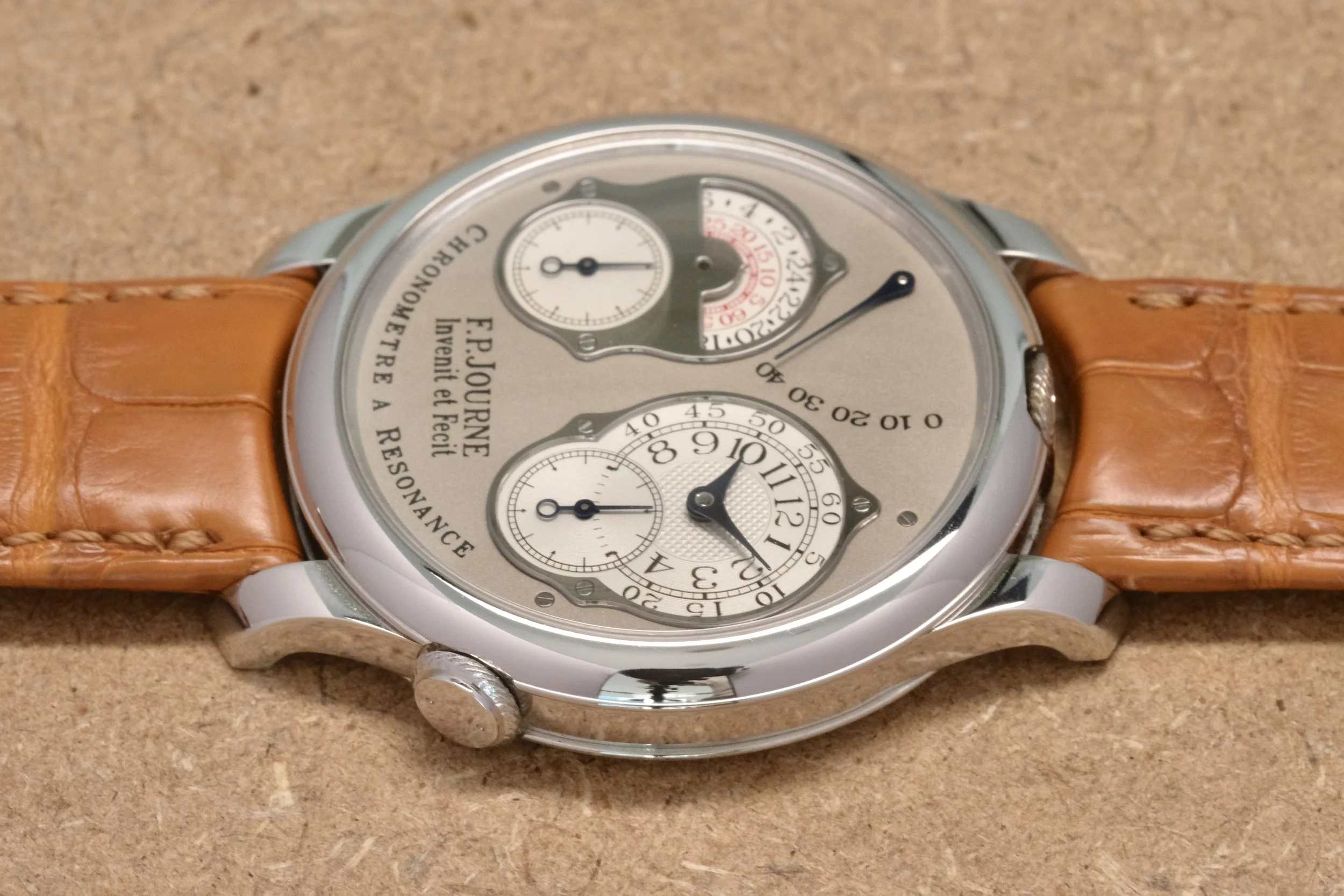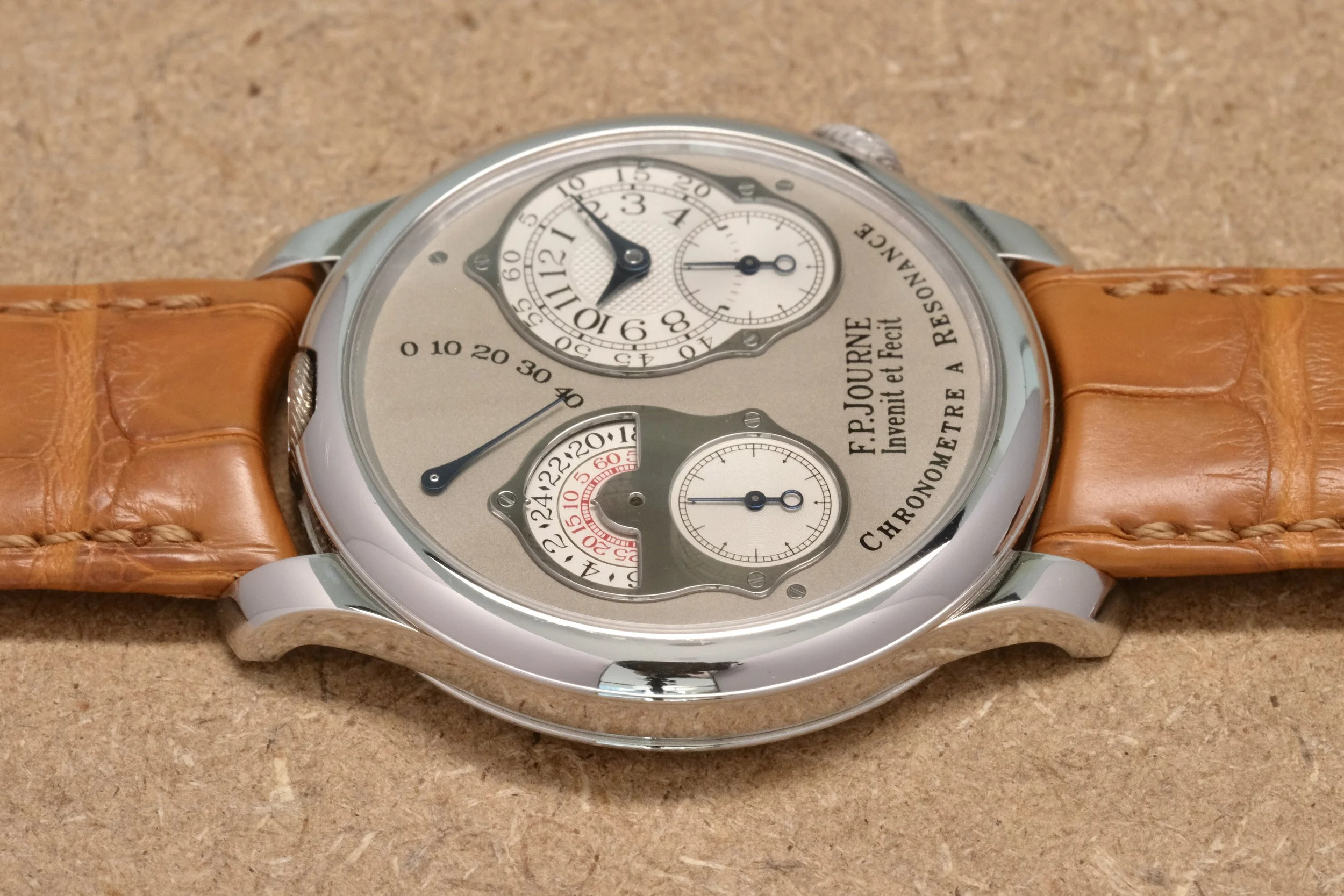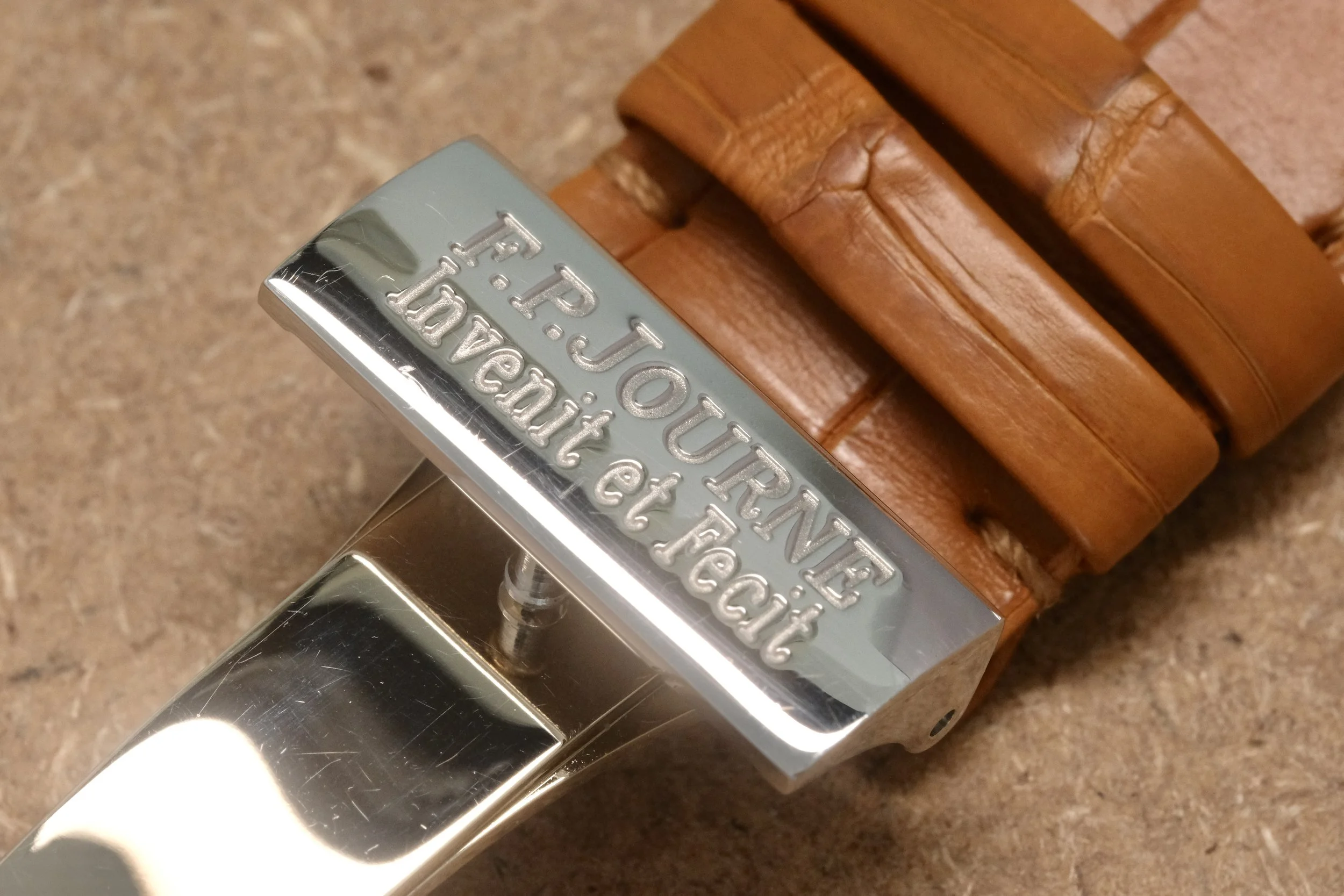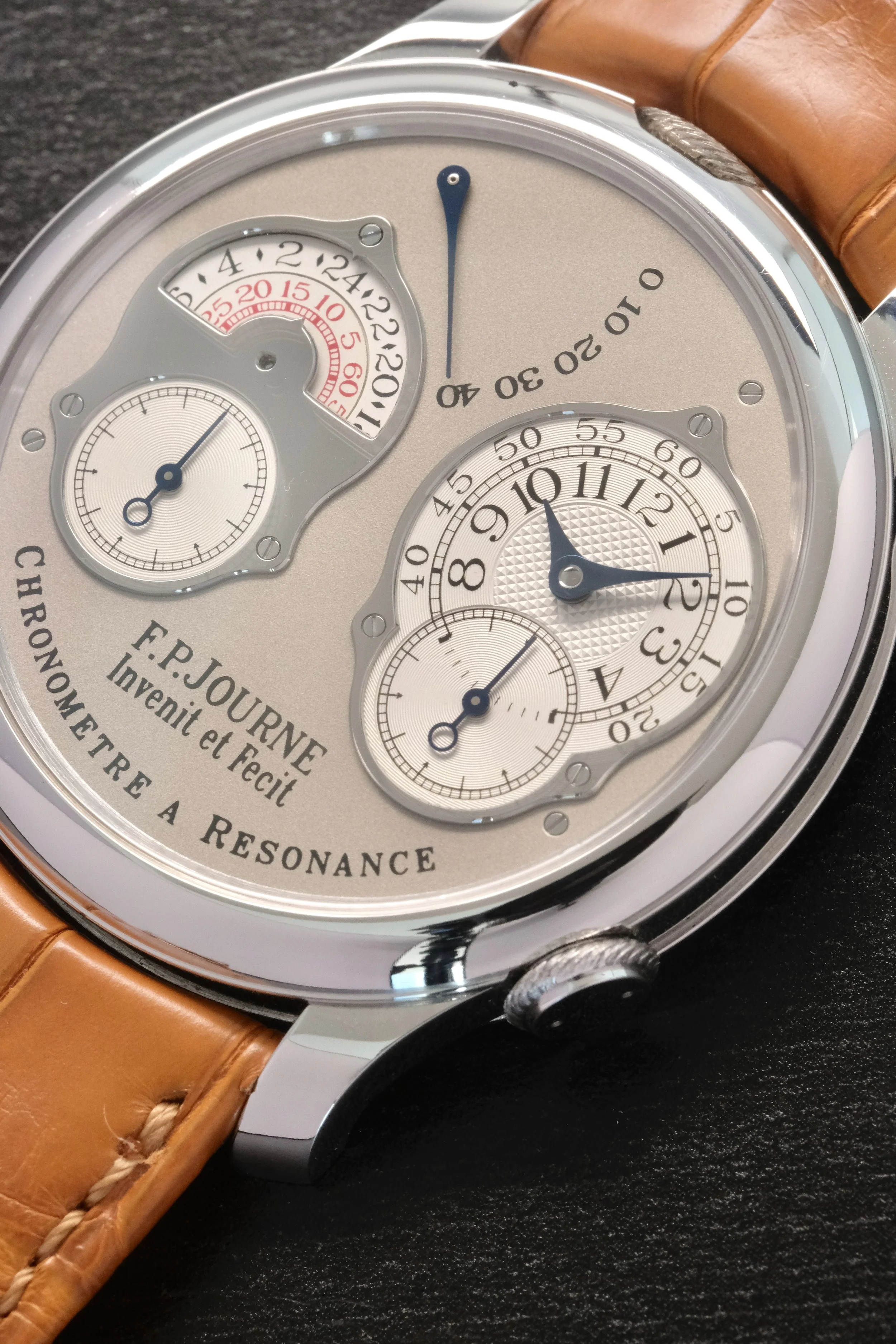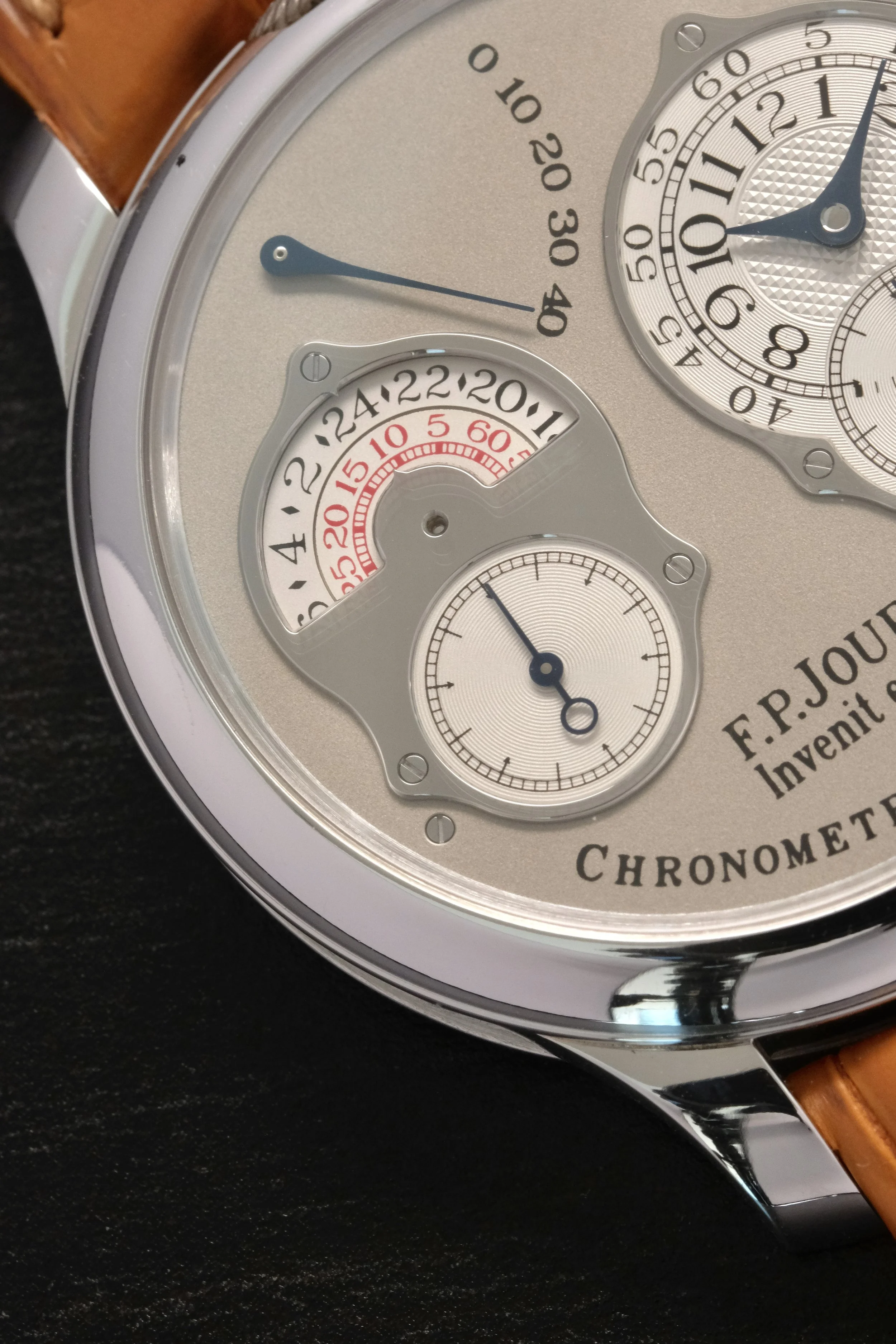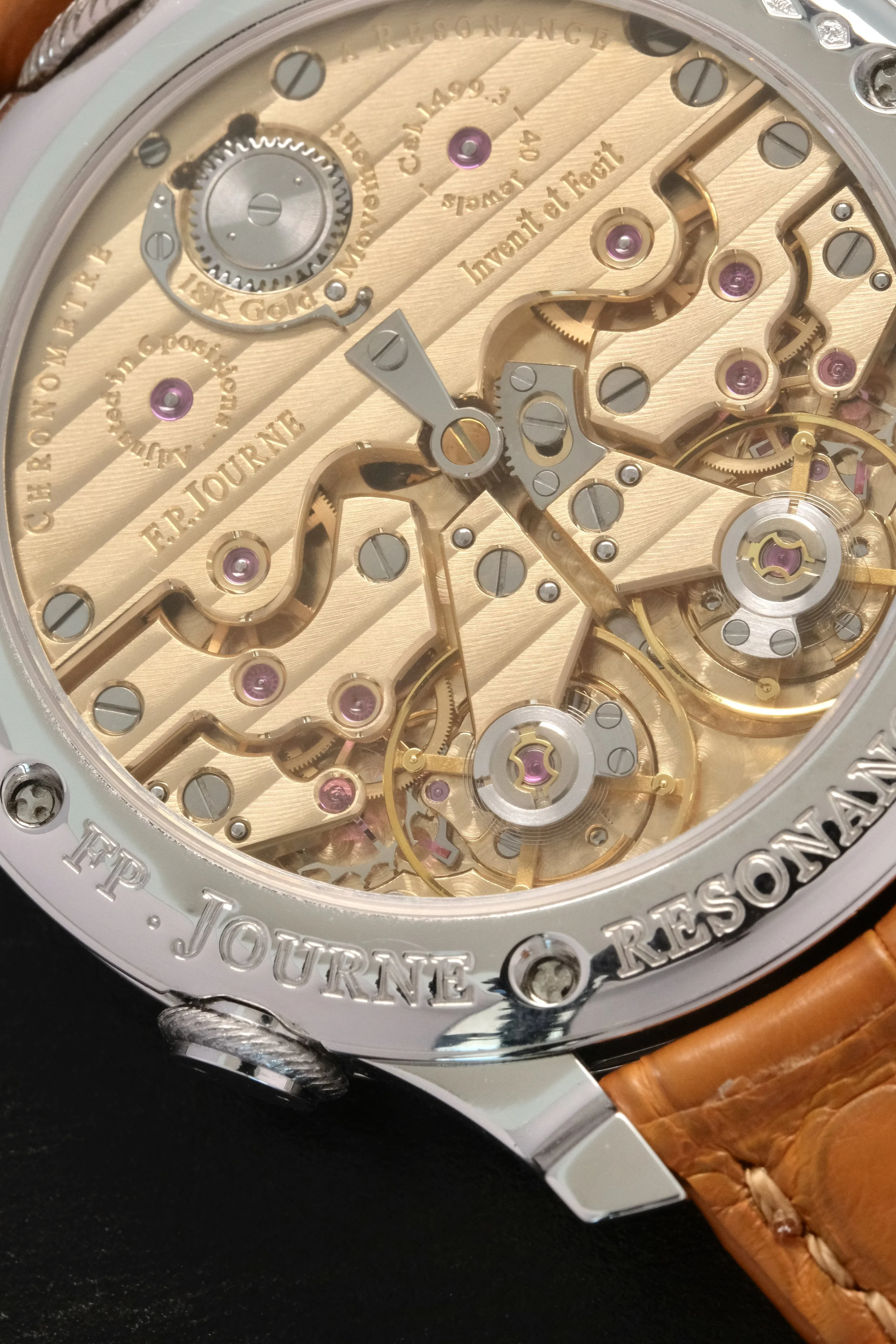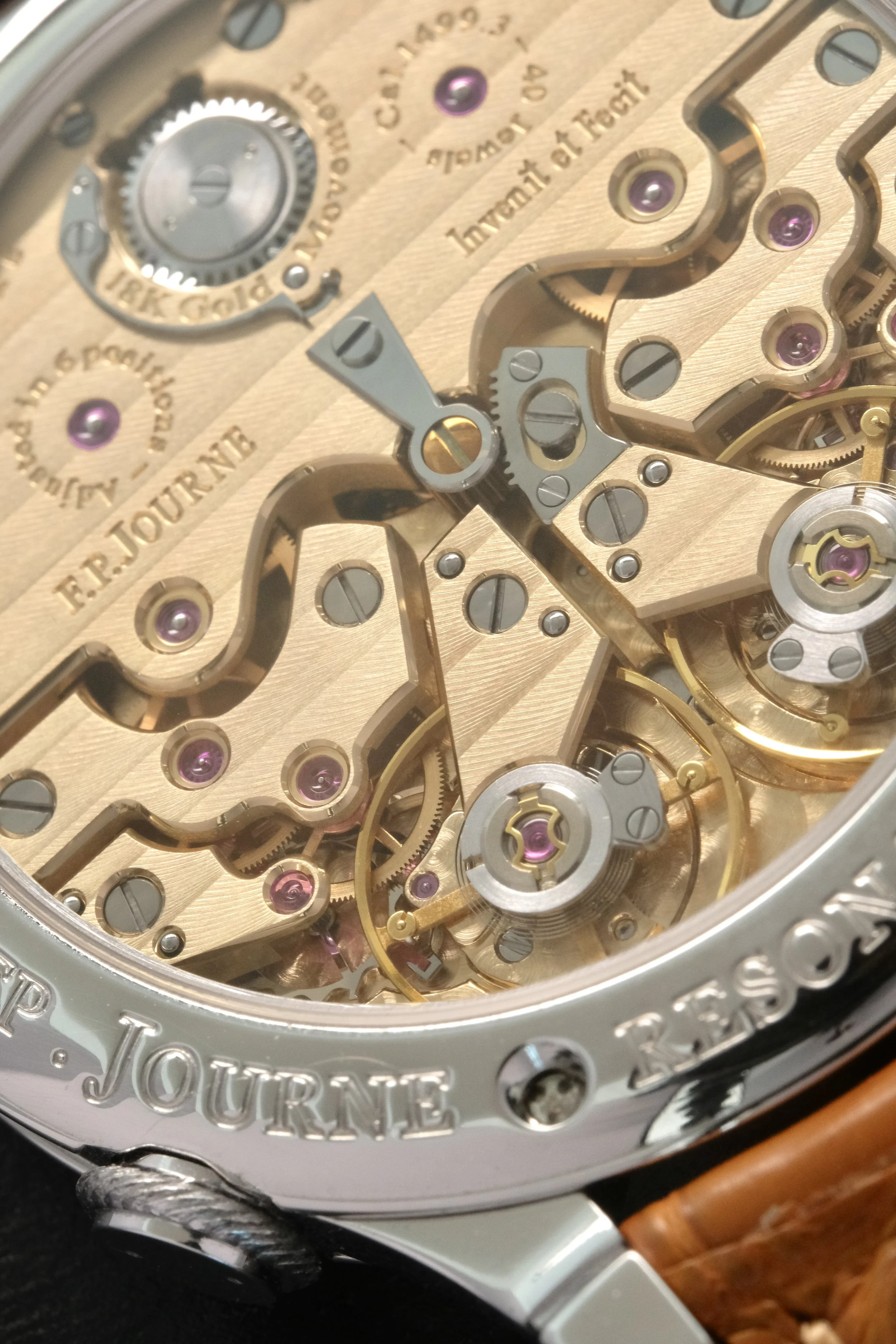Sold under Gross Margin Scheme
Inspired by the work of Abraham-Louis Breguet and Antide Janvier, Francois Paul Journe was the first contemporary watchmaker to develop a resonance movement. His first attempt was in 1983 in a pocket watch and he finally perfected it and fitted it to his souscription series Chronometre Resonance in the year 2000.
The principle of the Resonance is that when the two balance wheels are oscillating, one acts as the exciter and the other acts as the resonator. They will continuously swap these roles with each oscillation. Despite there being no physical connection between the balance wheels when they are in motion, one transmits energy to the other and vice versa. And because the balance wheels always oscillate in opposite directions, if the wearer’s arm is subject to positional change, one balance wheel will go faster and the counterpart will go slower. The energy they both share will cause them to synchronize again, canceling out any adverse positional influence.
For the 10th anniversary of the Chronometre Resonance, FP Journe launched the third generation, reference “RT” (Resonance Trios), produced between the year 2010 to 2019.
It features a newly designed dial layout in White Gold and for the first time it displays the time digitally as it incorporates a 24 hour disc and minute disc alongside the traditional time display. The look is distinct and resembles a parking meter, therefore the nickname “Parking Meter”.
The case measures at 40mm in diameter with 9mm thickness in Platinum. The crown at 12 works as the main crown, that winds the movement and set the time for both side. And the crown at 4 is actually a zero-reset for the second hands to synchronize the timing.
Powering the Chronometre Resonance is the Cal. 1499.3 Hand Wound movement in 18K Rose Gold giving it a spectacular view from the back.
Sold under Gross Margin Scheme
Inspired by the work of Abraham-Louis Breguet and Antide Janvier, Francois Paul Journe was the first contemporary watchmaker to develop a resonance movement. His first attempt was in 1983 in a pocket watch and he finally perfected it and fitted it to his souscription series Chronometre Resonance in the year 2000.
The principle of the Resonance is that when the two balance wheels are oscillating, one acts as the exciter and the other acts as the resonator. They will continuously swap these roles with each oscillation. Despite there being no physical connection between the balance wheels when they are in motion, one transmits energy to the other and vice versa. And because the balance wheels always oscillate in opposite directions, if the wearer’s arm is subject to positional change, one balance wheel will go faster and the counterpart will go slower. The energy they both share will cause them to synchronize again, canceling out any adverse positional influence.
For the 10th anniversary of the Chronometre Resonance, FP Journe launched the third generation, reference “RT” (Resonance Trios), produced between the year 2010 to 2019.
It features a newly designed dial layout in White Gold and for the first time it displays the time digitally as it incorporates a 24 hour disc and minute disc alongside the traditional time display. The look is distinct and resembles a parking meter, therefore the nickname “Parking Meter”.
The case measures at 40mm in diameter with 9mm thickness in Platinum. The crown at 12 works as the main crown, that winds the movement and set the time for both side. And the crown at 4 is actually a zero-reset for the second hands to synchronize the timing.
Powering the Chronometre Resonance is the Cal. 1499.3 Hand Wound movement in 18K Rose Gold giving it a spectacular view from the back.
